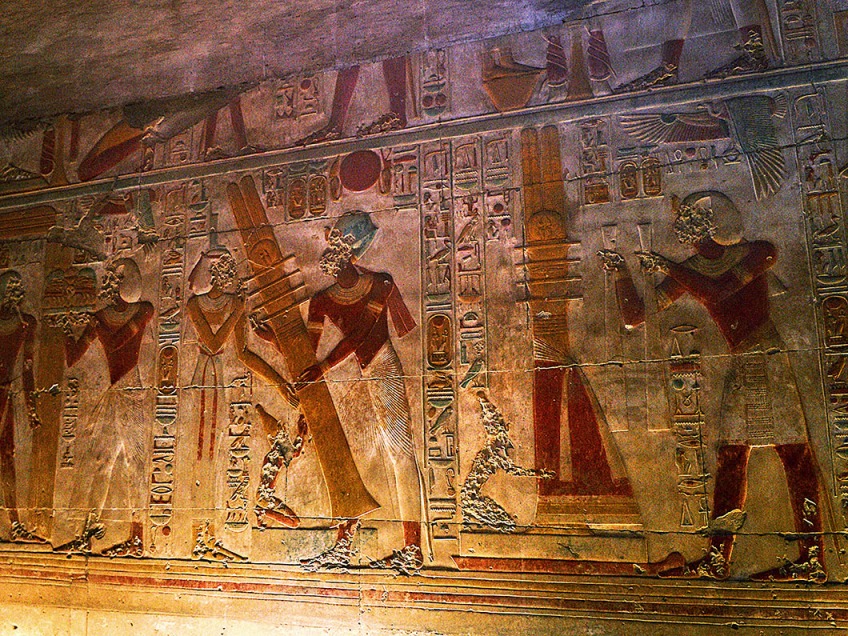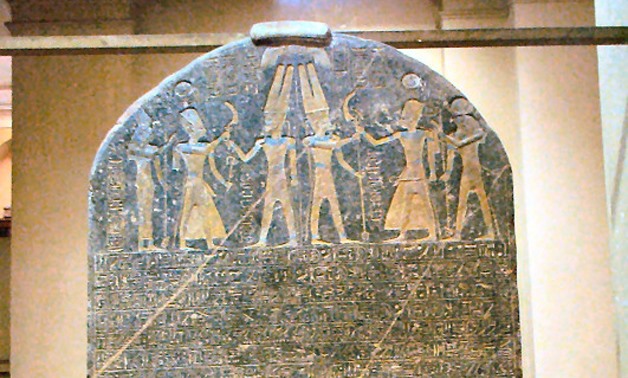by
Bimson thought (at least as late as 1980) that Merenptah’s Stele had pre-dated
the fall of Samaria by about a decade, to c. 734-733 BC; it being a reference rather
to the earlier Assyrian deportations of Israel by Tiglath-pileser III.
To recall what I have written previously:
– According to Courville, as we have seen, the stele’s inscription pertains to the Assyrian deportation of Samaria in c. 722/721 BC.
– Velikovsky would later look to connect it with the deportation of the Jews to Babylon after the sack of Jerusalem by Nebuchednezzar II [Ramses II and His Time, pp. 189-196]. Though Bimson has estimated Velikovsky’s date for the 5th Year of Merenptah at “no earlier than 564 BC … 23 years after the fall of Jerusalem” [‘An Eighth Century Date for Merenptah’, p. 57].
– Bimson thought (at least as late as 1980) that Merenptah’s Stele had pre-dated the fall of Samaria by about a decade, to c. 734-733 BC; it being a reference rather to the earlier Assyrian deportations of Israel by Tiglath-pileser III. …. [Ibid. See also ‘John Bimson replies on the “Israel Stele”,’ pp. 59-61].
– Rohl has in turn dated the conquests described in the stele to those effected by Seti I and Ramses II, his candidate for the biblical ‘Shishak’, himself regarding the stele as being Merenptah’s merely basking in the glory of what these, his great predecessors, had achieved before him. […. A Test of Time, ch. 7, pp. 164-171].
[End of quote]
For Drs. Velikovsky, Courville and Bimson (back then), this Egyptian Stele was supposedly commemorating one or another Assyro-Babylonian triumph – a most unlikely scenario!
And Rohl, for his part, though regarding the document as being a commemoration of Egyptian victories, considered these to be triumphs pre-dating pharaoh Merenptah – victories by his predecessors, Seti I and Ramses II.
Only Martin Sieff, amongst the revisionists, had envisaged this as being an Egyptian victory achieved by Merenptah himself.
Thus I wrote:
– And Sieff … related Merenptah’s victory to what he called the “time of troubles in the northern kingdom of Israel after the death of Jeroboam II”.
Martin Sieff’s realistic version, which is the one that I basically embraced in my postgraduate university thesis (Volume One, Chapter 11, pp. 300-305):
A Revised History of the Era of King Hezekiah of Judah
and its Background
was dependent upon the biblical chronology of Martin Anstey - and taken up by Philip Mauro - that the reign of Jeroboam II in Israel was followed by a 22-year period of interregnum.
Patrick Clarke
Rohl’s revised chronology, according to which Ramses II was the biblical pharaoh “Shishak” at the time of king Rehoboam of Judah (I Kings 14:25), has recently been picked up by Creationist, Patrick Clarke in his article, “The Stele of Merneptah—assessment of the final ‘Israel’ strophe and its implications for chronology”:
It is clear that the Merneptah stele can be interpreted in line with the United and Divided Monarchy Periods of Israelite history. Furthermore, if it can be demonstrated that Merneptah’s father, Ramesses II, was in fact Shishak, many synchronisms previously held by both supporters of the CEC [conventional] and revisionists between the people of Israel and their neighbours collapse, and a whole new series of compelling synchronisms emerges. The reigns of Ramesses II and Merneptah are contemporaneous with the last few years of the United Monarchy and the first 75 years of the Divided Monarchy. A detailed analysis of the ‘Israel’ text indicates that far from being placed in the 1200s bc, Merneptah’s reign should be dated to 913–903 bc; a movement of three centuries. Consequently, Ramesses II would have reigned from 979–913 bc, in the Divided Monarchy Period. In my proposed revised chronology all the political, military, and economic factors detailed on the stele coincide with conditions in Israel. This was not the case three centuries earlier in the time of the Judges.
[End of quote]
Whilst Clarke is correct in rejecting the conventional location of the Merenptah Stele to the approximate period of “the Judges”, his chronological re-setting of Ramses II and Merenptah has, in my opinion, dire consequences for the best efforts of the revision as explored by the likes of Drs. Velikovsky and Courville, and modified and enhanced by astute minds of the “Glasgow School” (including Martin Sieff).
For, as Clarke goes on to write:
Once this historical re-alignment takes place, a number of synchronisms previously held to be true by some revisionists, albeit well-intentioned, are refuted. Some of these erroneous synchronisms are: Thutmose III/Shishak;31 Hatshepsut/Queen of Sheba;32 Amenhotep II/Zerah the Cushite; Israel’s King Ahab/Battle of Qarqar; Israel’s King Jehu/Shalmaneser III—the final two failed synchronisms in this list have serious implications for the less than reliable Assyrian chronology.33
[End of quote]
No thank you. I myself shall stick with the, now manifold, synchronisms - as worked out by revisionists - between Egypt’s 18th dynasty and the United to Early Divided kingdom periods, especially those iron-cast synchronisms with El Amarna.
Clarke’s most useful contribution is, in my opinion, his expertise in Egyptian Hieroglyphics, which he has correctly noted has not been a strong suit amongst revisionists: “Knowledge of the Egyptian language and syllabic orthography is essential when assessing any Egyptian text, otherwise mistakes are inevitable”. Thus Clarke writes with regard to the Stele:
This reliance in Christian works on blind copying of old, outdated translations, which probably reflects the dearth of competent archeology and history specialists in the Christian community, is fraught with problems, as will be seen.
Knowledge of the Egyptian language and syllabic orthography is essential when assessing any Egyptian text, otherwise mistakes are inevitable. The majority of Egyptologists are in agreement regarding the entity ysry3l as Israel based on the syllabic orthography of the name and the context of the final poetic unit of the Merneptah stele. It is the chronological placement of Israel where scholars of the CEC and revisionist positions come into conflict.
[End of quote]
Clarke is particularly scathing about professor Joseph Davidovits, whom he calls “A secularist”, regarding the latter’s unorthodox translation of the Victory Stele (see Clarke’s section on p. 62: “A secularist attempt to deny Israel is even mentioned on the stele”).
A suggested solution
With my modification of the Nineteenth Egyptian Dynasty in its relation to Seti and the awkward Third Intermediate Period in multi-part series such as:
Seti I and Seti II Merenptah
I am now inclined to accept Rohl’s and Clarke’s opinion that the Israel Stele pertains to an early Nineteenth Dynasty ruler, such as Seti – but with my twist to this, that Seti was Merenptah.
See especially my article on this:
Seti I and Seti II Merenptah. Part Three: Seti I and II Merenptah and Merenptah






